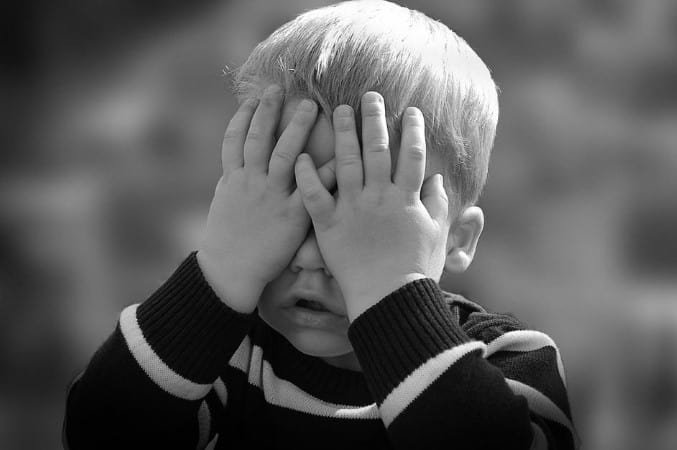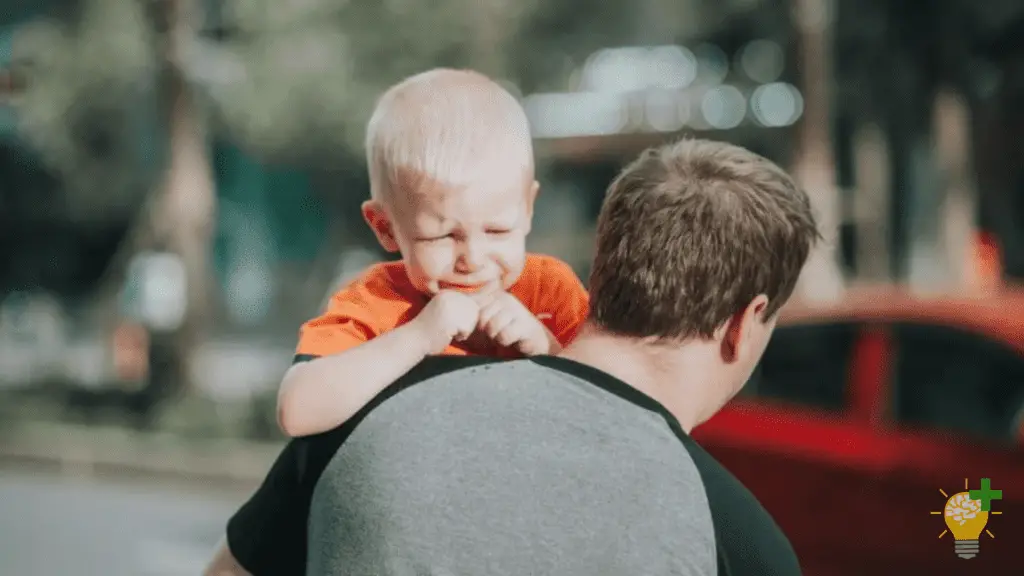Clinginess and crying are typical indications of separation anxiety in younger children. This is a natural reaction when parents leave them behind with new faces for several hours. It is okay for your child to feel anxious, especially during the first few days and even weeks of school.
In this article, I’ll share a few tips on how to help a young child with separation anxiety at school. However, there is a difference between normal separation anxiety and separation anxiety disorder.
Let’s briefly see the difference before delving into how to help a child with separation anxiety at school.
Difference Between “Normal” Separation Anxiety and Separation Anxiety Disorder
Separation anxiety is common in very young children between the ages of eight months and four years. Kids in this age bracket may become extra clingy and even throw tantrums when they are in unfamiliar places or left with strangers. This is normal and a sign that they are afraid or don’t completely trust the situation.
However, at this stage of development, it can be a bit tricky to tell whether a child has normal separation anxiety or separation anxiety disorder.
One sign that may suggest a disorder is when the anxiety starts to affect the normal activities of kids older than six years. In other words, the intensity of your child’s fear can indicate a more severe problem than normal separation anxiety.
Here are some other common signs of separation anxiety disorder:
- Unrealistic fear of being left alone
- Refusing to go to bed without the parent or caregiver staying close by
- Bedwetting
- Nightmare about being separated from the parents or primary caregiver
- Stomachaches, headaches, or other physical symptoms related to the fear of being separated
- Intense fear
- Unrelenting pleas or temper tantrums
If your child constantly complains of physical symptoms or is extremely afraid to go to school because of separation anxiety, you should consider seeing a mental health specialist.
Tips on How to Help a Child With Separation Anxiety at School

Practice Separation
You can do a trial run to help your child get used to the idea of not always having you around. Depending on the child’s age, you can leave them with a caregiver for short periods at first. Ensure that the caregiver isn’t too far away from your home.
Another way to practice separation is to leave the child at home with a babysitter while going for a short walk. Do this several times to help build your kid’s trust that you will always be back.
Organize Playdates With Classmates Before School Resumes
If you have access to a list of classmates, consider planning playdates with other kids before the school year. By getting together with other kids, your child will meet familiar faces in class when they eventually resume school.
Talk About School and What to Expect
Talking about going to school, learning new and interesting things, and meeting and making new friends can help your child look forward to attending school.
However, keep things casual. You don’t want to go into a lengthy discussion about the topic. Whatever you do, avoid talking too much about spending several hours with complete strangers. You may end up making them more anxious than they already are.
Practice Active Listening
Pay attention to what your child has to say and validate their feelings. Don’t try to belittle, ignore, or talk your child out of their feelings.
Tell the child that it is okay and absolutely normal to be nervous, and adults sometimes get nervous. But you will always support them to face and overcome their fears. Ensure that your child understands that you are confident in their ability to handle what’s making them anxious.
Say Goodbye and Avoid Making it a Big Deal
When it is time to leave, tell your child that you are leaving, but you’ll be back to pick them up, and then go. Leave without any fanfare. Don’t hesitate or make separation a big deal.
It might be tough and very emotional for the parent the first couple of times, especially if the child cries. But avoid lingering or stalling, as that might suggest to your child that you’re not too sure about the situation. This will only upset them further.
Don’t Sneak Away
One of the biggest mistakes you want to avoid is sneaking away when your little one is not looking. This will do more harm than good because your child’s fear will likely shoot through the roof if he realizes that mom or dad has suddenly disappeared and left him alone in the midst of strange faces.
Your child should know that you are leaving her behind in school, no matter how difficult this might be for you. Yes, it might be painful to watch her cry as you walk away, but she’ll deal it that pain better than the shocking realization that you are nowhere to be found.
Create a Goodbye Routine
Decide on a goodbye routine so that your child knows that you are about to leave. Although your child will feel the pain of separation, a goodbye routine can be reassuring.
This can be a simple wave, a special handshake, a hug, or a goodbye kiss. Just make sure you and your child are on the same page about the routine.
Keep Your Promise
Whatever you do, ensure to come back for your child when you say you will. This helps establish trust and confidence and makes it a tad easier for your child to handle the separation.
Final Thoughts
Separation anxiety is normal with young children, and no matter the level of preparation, kids will still be nervous for the first couple of days.
However, by following the above tips, you can ease their fears a bit and help them get used to staying longer hours without dad and mum.
Also, consider teaching your kids to use affirmations as soon as they can comprehend the meaning of the words. Check out these powerful affirmations that can help empower your kids with self-confidence.




![7 Best Apps To Improve Self-Esteem : [How to Make 2023 Amazing] 6 7 Best Apps To Improve Self-Esteem [2022]](https://thinkpositivecheck.com/wp-content/uploads/2022/02/7-Best-Apps-To-Improve-Self-Esteem-2022-1024x576.png)